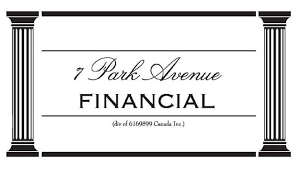|
Cash Flow Crisis? Discover How Factoring Receivables Provides Instant Relief
Beyond Bank Loans: How Factoring Receivables Fuels Canadian Business Growth
YOUR COMPANY IS LOOKING FOR COMMERCIAL FACTORING AND RECEIVABLE FACTORING FINANCING!
You've arrived at the right address! Welcome to 7 Park Avenue Financial
Financing & Cash flow are the biggest issues facing businesses today
ARE YOU UNAWARE OR DISSATISFIED WITH YOUR CURRENT BUSINESS FINANCING OPTIONS?
CONTACT US
CALL NOW - DIRECT LINE - 416 319 5769 - Let's talk or arrange a meeting to discuss your needs
EMAIL - sprokop@7parkavenuefinancial.com

ACCOUNTS RECEIVABLE FACTORING IN CANADA
7 Park Avenue Financial originates business financing solutions for Canadian Businesses – We offer Receivable factoring and working capital solutions – Save time, and focus on profits and business opportunities
7 Park Avenue Financial: “Canadian Business Financing with the intelligent use of experience”
Commercial factoring in Canada addresses some of your firm's major daily issues in cash flow and working capital challenges.
Let's investigate the business credit line battle—an ongoing wrangle between traditional banks and commercial finance companies.
Most business owners know the drill - customers have always been slow to pay, and that's not getting any better.
In addition, cash flow requirements change daily as your business addresses the working capital needed to finance inventory and receivables and manages investments in ongoing operations, debt payments, commitments to suppliers, etc.
Break Free from Cash Flow Constraints
Your business is thriving with orders, but unpaid invoices are piling up. Every day spent waiting for customers to pay is a missed opportunity for growth.
Let the 7 Park Avenue Financial team show you how Factoring receivables transforms those outstanding invoices into immediate cash flow, as the accounts receivable factoring company pays immediately, putting money back into your business when you need it most—not when your customers decide to pay.
Three Uncommon Takes on A/R Financing
- Factoring can be a strategic tool for market expansion, allowing businesses to confidently take on larger clients with longer payment terms without compromising operational stability.
- Unlike traditional financing, factoring accounts receivables can strengthen supplier relationships by enabling prompt payments. This can potentially unlock early payment discounts that offset factoring fees.
- Factoring services often include professional credit assessments of potential customers, providing small businesses with enterprise-level risk management capabilities they couldn't otherwise afford.
WHAT IS COMMERCIAL FACTORING?
Factoring finance is a widely used form of accounts receivable finance.
Unlike assigning or pledging your receivables to a bank, the documentation in a factoring facility via factoring companies specifies the sale of the receivable in exchange for an advance payment - In this method of accounts receivable financing, the typical advance rate is in the 85-90% range which is significantly larger than bank margins on AR.
The remaining receivable balance is advanced to the company at a lower fee. When the end user customer pays the invoice, it's as simple as that.
When using this form of financing cash flow, companies must consider the factoring company's involvement in the transaction. Although factoring fees are currently the most competitive they have ever been, they are generally higher than traditional financial institutions, such as bank interest rates.
On smaller transactions, some non-bank commercial finance companies might require all receivables to be financed, which should be avoided if possible, allowing a client to use selective receivable funding only when needed.
Factoring your a/r with recourse means the company assumes the normal credit and bad debt risk. Firms that wish to transfer the risk of bad debts to the finance company can enter into a non-recourse finance agreement where the factoring company assumes the risk after the cash advance.
Is there a solution to those challenges?
We know there is. Is it as expensive as you may have heard? We are pretty sure it is not. The reality is that commercial AR factoring solutions have dramatically dropped in pricing over the last few years.
FACTORING ACCOUNTS RECEIVABLE IS AN INNOVATIVE FINANCIAL SOLUTION
So what is A/R financing, and what solution, traditional or alternative, works for your firm?
Commercial factoring involves the ongoing sale of receivables for instant cash. Many customers make their decisions based on the rates and pricing they have heard about this financing type that helps bridge cash flow gaps.
In Canada, those costs range from 8% annually to 1- 1.5% monthly. Customers with good profit margins should easily be able to afford that cost. Financial technology allows firms to focus on collections in real-time.
THE COST OF FINANCING RECEIVABLES
Let's talk about costs.
Many customers calculate the 'all-in' cost of borrowing from banks, which is often much higher than they might think—despite those low bank rates.
So it is important not to get 'seduced' by your low rate expectations around traditional Canadian bank financing- not to mention the rigorous criteria banks impose for those low rates and flexibility.
When our clients qualify, we're big supporters of banks - which isn't always the case. Many clients we meet with can't meet the requirements (the banks call them covenants) for borrowing on a revolving ongoing basis for working capital, particularly receivables and inventory.
So, the conversation around pricing becomes somewhat moot.
CONSIDER OPPORTUNITY COST
Instead of worrying about the cost of factoring, consider the following: If you have money tied up in accounts receivable for, for example, 60 days, you are losing the opportunity to receive payment, reinvest in your business, and increase your overall return on equity.
The faster you get paid, the more you can reinvest in further sales for your firm, which creates more profits.
If you are looking for unlimited working capital/cash flow for your business, Consider factoring since as long as your sales and orders grow, so does your access to cash flow—essentially unlimited!
THE BOTTOM LINE?
A bottom line: Most business owners view cash flow as unpredictable, and commercial factoring removes that unpredictability. You, in effect, control the cash flow valve, financing all or a part of your receivables when you choose.
A/R financing is growing worldwide, with North America being no exception. Certainly, in Canada, it has been on the rise, too.
Some of Canada's largest corporations use this type of financing - when it comes to larger corporations fancier finance terms like 'securitization' are used. Bottom line, If General Motors factors, why shouldn't you?
So, even if your firm has suffered financial losses or is in a turnaround situation, you are still a strong candidate for this type of business financing!
Factoring is the ultimate in off-balance sheet financing - you monetize your receivables and instantly generate cash.
The secret of factoring costs, or their perceived costs, is utilizing those funds. You can use the cash flow generated from receivables sales to pay invoices from suppliers, take a discount, or negotiate better terms and pricing for your products.
When you have additional working capital, you can grow sales and revenue and increase profits—financial flexibility is what this type of financing is all about.
Sometimes it is a 'bridge' solution, in certain cases, it can easily become your long-term ongoing working capital solution.
KEY TAKEAWAYS & BENEFITS OF COMMERCIAL FACTORING RECEIVABLE FINANCE AR SOLUTIONS / FACTORING SERVICES
Businesses that utilize commercial factoring effectively have a strong level of flexibility in financing their sales, and the apparent liquidity of incoming cash flows from sales adds to business success.
Many businesses that can't access some or all of the funding they need from banks can benefit from the A/R financing solution.
These solutions do not bring debt to the balance sheet.
Case Study: Factoring Success
When a Canadian Mfr. Securing its largest contract with a major retailer, excitement quickly turned to concern. The $750,000 order required significant upfront material costs, yet payment terms stretched to 60 days after delivery.
With only $200,000 in available working capital, the company faced a critical decision: decline the opportunity or find alternative financing. Traditional lenders offered solutions that would take weeks to approve – time the manufacturer didn't have.
The Company turned to receivables factoring and received approval within 48 hours. Upon delivering the first shipment and generating a $250,000 invoice, the factor immediately advanced $212,500 (85%).
This capital covered material costs for the next production run while maintaining normal operations.
KEY TAKEAWAYS
- Factoring converts unpaid invoices into immediate cash, typically providing 80-90% upfront with the remainder (minus fees) paid when customers settle their invoices.
- Unlike loans, factoring approval depends primarily on your customers' creditworthiness rather than your business credit profile, making it accessible to growing companies.
- Most factoring arrangements include professional credit verification services that evaluate customer risk, helping protect your business from potential bad debt.
- Factoring companies typically advance funds within 24-48 hours, providing rapid access to working capital during crucial growth phases or cash flow gaps.
- The cost structure combines discount rates (percentage of invoice value) with potential service fees, creating total costs typically ranging from 1-5% depending on volume, industry, and customer payment terms.
- Many factoring facilities grow with your business, automatically increasing available capital as your sales volume expands without requiring new applications.
- Canadian factoring services often include comprehensive accounts receivable management, freeing up internal resources while improving collection efficiency.
CONCLUSION - RECEIVABLE FACTORING CANADA
Current economic conditions bring a lot of volatility to the business financing marketplace -
Cash flows have never been more critical, and customers of businesses large and small stretch payables out far later than the trade credit terms extended and offered -
The potential cash flow crunch and the focus on more liquidity make accounts receivable finance a logical solution for fast payment as companies generate sales.
So, what’s our bottom line?
Call 7 Park Avenue Financial, a trusted, credible and experienced Canadian business and working capital advisor, to ensure you understand the benefits of this unique type of business financing in Canada.
FAQ: FREQUENTLY ASKED QUESTIONS / PEOPLE ALSO ASK / MORE INFORMATION
Is factoring the same as receivables financing?
Financing receivables differs from factoring in that in an a/r finance arrangement accounts receivables are pledged or assigned to a bank or other financial institution/firm - In the factoring process, the paperwork specifies an actual sales/ transfer of ownership of the receivable.
Is financing receivables a loan?
Short-term debt financing via a factoring finance/invoice discount facility is not a term loan per se - it is simply the monetization of the balance sheet's current asset - i.e. receivables.
How Does Factoring Work, and What are the costs?
Receivable factoring for business accounts allows a business to finance unpaid invoices by ' selling ' the invoice amount to a finance factoring company for a fee, which is not an interest rate per se.
What is Selective Receivable Finance
The financing of selective receivables is a subset solution of factoring that offers a level of flexibility to businesses that do not wish to factor finance all of their a/r. Sales to specific creditworthy clients allow a company to receive cash for accounts it wishes to finance to improve its working capital position. It is a more strategic method of funding business needs and is not a term loan that brings debt to the balance sheet.
What's the difference between factoring and a business loan?
Receivable finance converts your existing invoices into immediate cash without creating new debt. Unlike loans, approval depends on your customers' creditworthiness rather than your business credit score, making it accessible even for growing companies with limited credit history.
How quickly can I receive funds through factoring?
Most factoring companies provide initial funding within 24-48 hours after approving your application, with subsequent advances typically processed within 24 hours of invoice submission. This rapid turnaround makes factoring an excellent solution for urgent cash flow needs.
Will my customers know I'm using factoring?
Depending on the arrangement, factoring can be structured as notification factoring or non-notification factoring. With notification factoring, customers are informed and make payments directly to the factor. Non-notification factoring maintains your direct customer relationship, though this option may have different terms and costs.
What percentage of my invoice value will I receive?
Typically, you'll receive 80-90% of the invoice value upfront. The remaining amount, minus the factor's fee, is released when your customer pays the invoice. Rates vary based on your industry, customers' creditworthiness, and invoice volume.
What happens if my customer doesn't pay the factored invoice?
The resolution depends on whether you chose recourse or non-recourse factoring. With recourse factoring, you must buy back unpaid invoices or replace them with collectible ones. Non-recourse factoring protects against customer insolvency, though this insurance typically increases the factoring cost.
Is factoring receivables available for all types of businesses?
Factoring receivables works best for B2B companies that invoice other businesses with clear payment terms. Service providers, manufacturers, distributors, transportation companies, and staffing agencies commonly use factoring. Due to the retail payment structure, companies primarily serving individual consumers may find factoring less suitable.
How does factoring compare to invoice discounting?
Factoring receivables typically includes full accounts receivable management, with the factor handling collections from your customers. Invoice discounting provides similar upfront payment but allows you to maintain control of your sales ledger and customer relationships, keeping the financing arrangement confidential from your clients.
Can I factor only certain invoices or must I factor all receivables?
Many factoring companies offer selective factoring that allows you to choose specific invoices for financing. This flexibility lets you:
- Use factoring strategically for certain customers
- Factor invoices only when needed for cash flow
- Test the factoring process before full commitment
- Minimize costs by factoring selectively
- Maintain direct relationships with preferred clients
How does technology impact modern factoring receivables services? Today's factoring platforms incorporate digital innovations that streamline the process through:
- Online portals for invoice submission and tracking
- Real-time funding status updates
- Automated payment reconciliation
- Integration with accounting software
- Electronic verification and documentation
How do factoring rates compare between different industries?
Factoring rates vary significantly across industries based on risk profiles and payment patterns. Manufacturing typically enjoys lower rates (1-2%) due to tangible products and established customers. Construction factoring often carries higher rates (3-5%) because of complex payment terms and potential disputes. Staffing companies generally see moderate rates (2-3%) with higher volume discounts due to frequent, consistent invoicing.
What documentation is needed to begin factoring receivables? The factoring application process typically requires:
- Business registration documents
- Recent accounts receivable aging reports
- Sample invoices and contracts
- Customer list with contact information
- Recent financial statements or tax returns
- Bank statements from the past 3-6 months
-
What is the typical contract term for factoring arrangements?
Most Canadian factoring companies offer flexible arrangements with:
- Initial terms of 6-12 months
- Renewal options for continued service
- Volume minimums rather than time commitments
- Clear termination procedures
- Scalable funding limits that grow with your business
CITATIONS / MORE INFORMATION
- Canadian Federation of Independent Business. (2023). "Cash Flow Challenges for SMEs." CFIB Small Business Report, 47(3), 12-18. https://www.cfib-fcei.ca
- Financial Management Association of Canada. (2022). "Alternative Financing Trends in Canadian Markets." Annual Financial Survey, 112-124. https://www.fma-canada.org
- Journal of Business Finance. (2023). "Comparative Analysis of Working Capital Solutions for Growth-Stage Companies." Vol. 35, Issue 2, 78-92. https://www.jbf-journal.com
- Statistics Canada. (2024). "Payment Patterns and Financial Challenges in Canadian Small Business." Economic Insights, Report 109-F. https://www.statcan.gc.ca
- Canadian Association of Alternative Business Financing. (2023). "The Growth of Factoring in Canadian Markets 2018-2023." Industry Analysis Report. https://www.caabf.ca

' Canadian Business Financing With The Intelligent Use Of Experience '
STAN PROKOP
7 Park Avenue Financial/Copyright/2025

ABOUT THE AUTHOR: Stan Prokop is the founder of 7 Park Avenue Financial and a recognized expert on Canadian Business Financing. Since 2004 Stan has helped hundreds of small, medium and large organizations achieve the financing they need to survive and grow. He has decades of credit and lending experience working for firms such as Hewlett Packard / Cable & Wireless / Ashland Oil
|